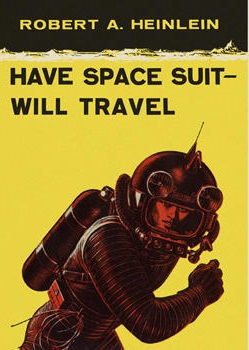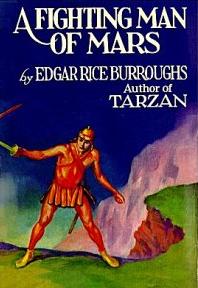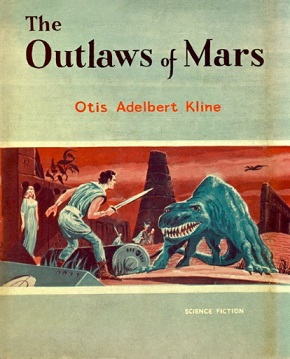
Time for the Stars is a juvenile science fiction novel by American writer Robert A. Heinlein, published by Scribner's in 1956 as one of the Heinlein juveniles. The basic plot line is derived from a 1911 thought experiment in special relativity, commonly called the twin paradox, proposed by French physicist Paul Langevin.

Citizen of the Galaxy is a science fiction novel by American writer Robert A. Heinlein, originally serialized in Astounding Science Fiction and published in hardcover in 1957 as one of the Heinlein juveniles by Scribner's. The story is heavily influenced by Rudyard Kipling's Kim.

Methuselah's Children is a science fiction novel by American writer Robert A. Heinlein, originally serialized in Astounding Science Fiction in the July, August, and September 1941 issues. It was expanded into a full-length novel in 1958.

Have Space Suit—Will Travel is a science fiction novel for young readers by American writer Robert A. Heinlein, originally serialised in The Magazine of Fantasy & Science Fiction and published by Scribner's in hardcover in 1958. It is the last of the Heinlein juveniles.

"By His Bootstraps" is a 20,000 word science fiction novella by American writer Robert A. Heinlein. It plays with some of the inherent paradoxes that would be caused by time travel.
"The Menace From Earth" is a science fiction short story by American writer Robert A. Heinlein, first published in the August 1957 issue of The Magazine of Fantasy & Science Fiction.

Orphans of the Sky is a science fiction novel by American writer Robert A. Heinlein, consisting of two parts: "Universe" and its sequel, "Common Sense". The two novellas were first published together in book form in 1963. "Universe" was also published separately in 1951 as a 10¢ Dell paperback. These works contain one of the earliest fictional depictions of a generation ship.

A Fighting Man of Mars is a science fantasy novel by American writer Edgar Rice Burroughs, the seventh of his Barsoom series. Burroughs began writing it on February 28, 1929, and the finished story was first published in The Blue Book Magazine as a six-part serial in the issues for April to September 1930. It was later published as a complete novel by Metropolitan in May 1931.

The Past Through Tomorrow is a collection of science fiction stories by American writer Robert A. Heinlein, all part of his Future History.

The Wind from the Sun (ISBN 0-15-196810-1) is a 1972 collection of science fiction short stories by British writer Arthur C. Clarke. Some of the stories originally appeared in a number of different publications. A part of the book was included in CD on board the Planetary Society's solar sail, Cosmos 1.

The Black Cloud is a science fiction novel by British astrophysicist Fred Hoyle. Published in 1957, the book details the arrival of an enormous cloud of gas that enters the solar system and appears about to destroy most of the life on Earth by blocking the Sun's radiation.

"The Year of the Jackpot" is a science fiction short story by American writer Robert A. Heinlein, first published 1952, and collected in one of Heinlein's anthologies, The Menace from Earth.
The science fiction writer Robert A. Heinlein (1907–1988) was productive during a writing career that spanned the last 49 years of his life; the Robert A. Heinlein bibliography includes 32 novels, 59 short stories and 16 collections published during his life. Four films, two TV series, several episodes of a radio series, and a board game derive more or less directly from his work. He wrote a screenplay for one of the films. Heinlein edited an anthology of other writers' SF short stories.

Off the Main Sequence: The Other Science Fiction Stories of Robert A. Heinlein (ISBN 1-58288-184-7) is a collection of 27 short stories by American writer Robert A. Heinlein, including three that were never previously collected in book form.

The Menace From Earth is a collection of science fiction short stories by American writer Robert A. Heinlein. It was published by The Gnome Press in 1959 in an edition of 5,000 copies.

The Domes of Pico is a juvenile science fiction novel, the second in Hugh Walters' Chris Godfrey of U.N.E.X.A. series. It was published in the UK by Faber in 1958, in the US by Criterion Books in 1959 under the title Menace from the Moon and in the Netherlands by Prisma Juniores as 'De Maan Valt Aan' in 1960.

Danny Dunn on the Ocean Floor is the fifth novel in the Danny Dunn series of juvenile science fiction/adventure books written by Raymond Abrashkin and Jay Williams. The book was first published in 1960.

The Outlaws of Mars is a science fiction novel by Otis Adelbert Kline in the planetary romance subgenre pioneered by Edgar Rice Burroughs. It was originally serialized in seven parts in the magazine Argosy beginning in November 1933. It was first published in book form in 1961 in hardcover by Avalon Books in 1961; the first paperback edition was issued by Ace Books in the same year. Later trade paperback editions were published by Pulpville Press in November 2007 and Paizo Publishing in May 2009.

Galactic Derelict is a science fiction novel by American writer Andre Norton, the second in her Time Traders series. It was first published in 1959, and as of 2012, had been reprinted in eight editions. It is part of Norton's Forerunner universe.
The Canopy of Time is a science fiction novel by English writer Brian W. Aldiss, first published in 1959 by Faber and Faber. The story is a fix-up of previously published short stories, centering on the forty-million year history of the fictional city of New Union. The book was published in the United States as Galaxies Like Grains of Sand.





















